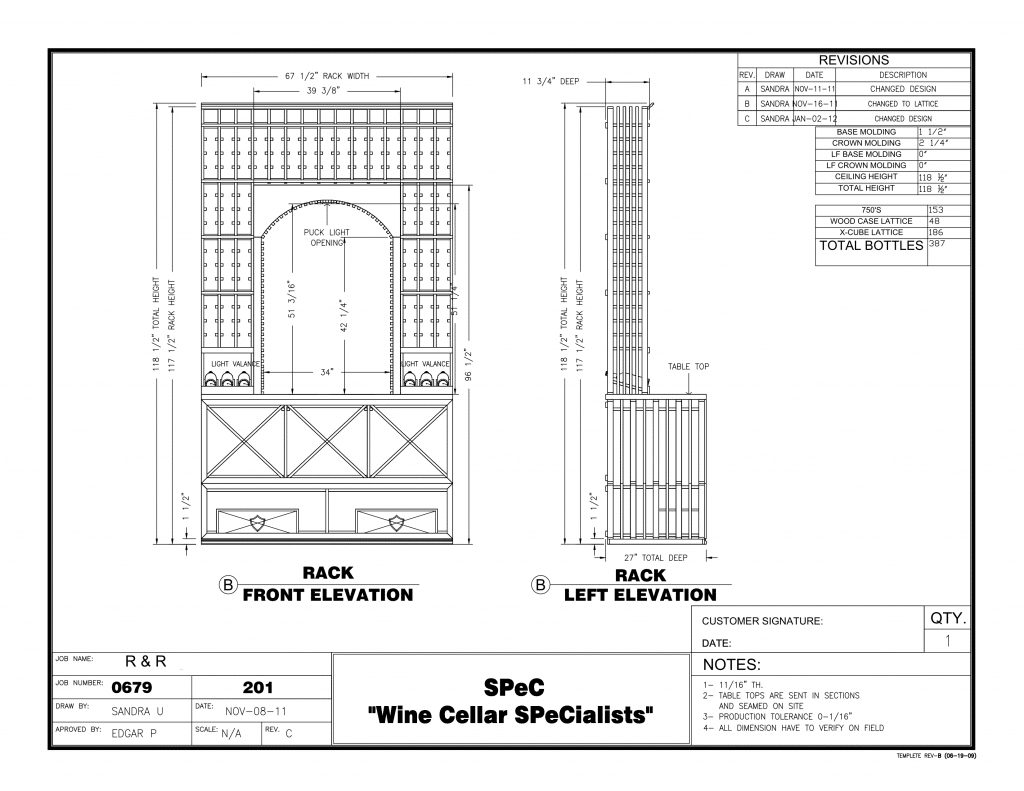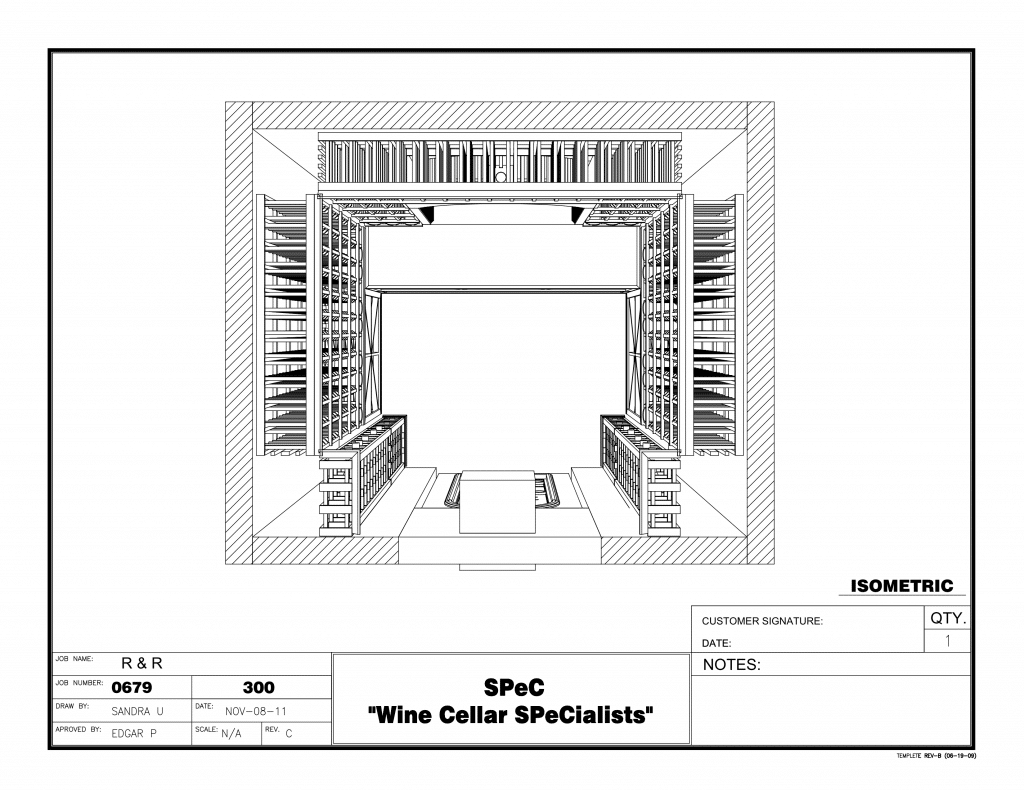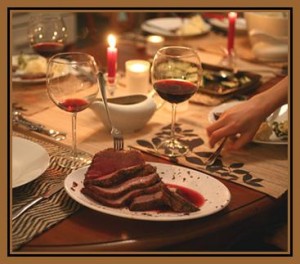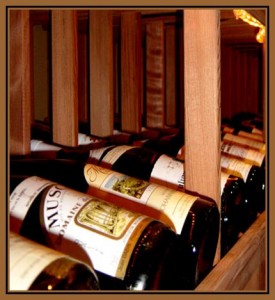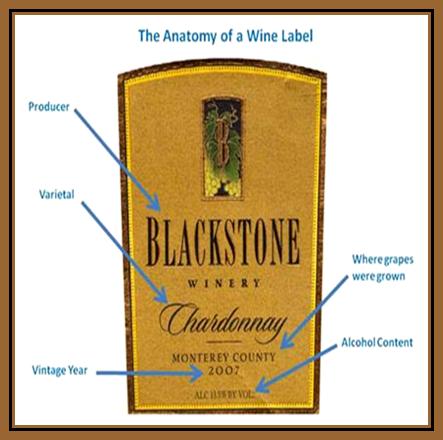Residential Custom Wine Cellars Atlanta Georgia R & R – Processed Video Transcription
I’d like to take you on a tour of our latest custom wine cellars in Atlanta, Georgia project. This residential wine cellar was actually created in a high-rise condominium. It created a few situations but nothing we couldn’t overcome.
This particular residential wine cellar holds a total of 997 bottles. The room that this wine cellar was created in had four structural columns. Actually, I believe two of the columns may have been structural, the others were not, but in order to make this look correct, we kept the columns and worked around them.
We added custom wine racks between the columns on the two sides of the back wall and then on the front wall some of the columns are 15 inches deep, we added a horizontal rack. You’ll see that as we go along with the drawings.
You’ll notice in the drawings each elevation is designated by a letter. The left and right walls are elevation A, the back wall is elevation B and the front sections here are elevation D, I don’t know what happened to elevation C.
Elevation A, the left and right walls have X bins on the bottom. These are lattice X bins so it has a support rack where the back wall comes out this is not seen in the room when it’s completed. You have a high reveal display row with a light balance above it and 750ml individual bottles above that. These custom wine racks we made are 11 3/4 inches deep, simply so that they fit in with the columns. You have a 1 1/2 inch toe kick and a 2 1/4 inch crown molding.
We’ll go to elevation B, the back wall. We have a tall arch with a pot light opening and light valances over the display row, 750ml bottles up above, three X-cubes, and room four actually for case storage. This bottom section is double deep. Therefore, your X- bins are double deep as well as your case storage. It includes a tabletop area; the upper section with the 750s is single deep.
The elevation D is the little area right where you come into the room, next to the first columns on the left to the right. Here we have horizontal display racks where your bottles are stored horizontally.
This is the overhead view of the room. You can see your bottles can go in from the ends on this particular horizontal rack.
This is the back wall, you can see that we have lattice X bins and lattice case storage below. Looking toward the custom wine cellar door, you can see that we have used the Tuscan door; it’s a square door with arched glass. The whisper cooling unit is located above the custom wine cellar door.
This is your left wall and this is your right wall and back wall, and you can see we have the lattice bins, the 750s above, and the arch.
We are going to do a quick walk of some of the completed photos. Here you can see the door. This door is a Tuscan and Knotty Alder has the black hand-forged wrought iron, has a square top and arched glass and the stain is early American with number 850 moldings.
This is the back wall. Our racks are in Premium Redwood with a lacquer that brings out the color of the redwood. Here you have the left wall showing the lattice bins and individual bottles and here you have the right wall.
I hope you’ve enjoyed the walkthrough of the Custom Wine Cellars in Atlanta Georgia. This was created by Residential Wine Cellar Specialists.








